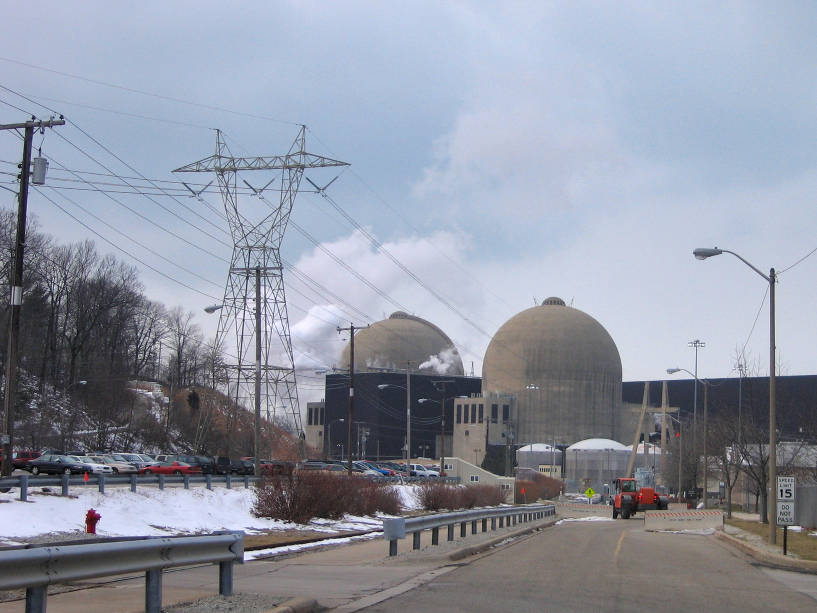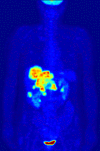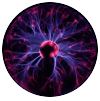What is nuclear engineering?
By Nick Touran, Ph.D., P.E., 2008-11-09 , Reading time: 6 minutes
Nuclear engineers apply knowledge of atomic nuclei to design, build, and operate special equipment that is useful to humanity. These applications fall into several broad categories, including fission power, radiation detection, nuclear medicine, nuclear materials, and plasma science. These categories overlap all the time, since nuclear materials knowledge is required for all applications, nuclear medicine and fission power depend on accurate radiation detection, and so on.
Fission Power

Nuclear engineers working in fission support power-producing nuclear reactors in one way or another.
Medical and Health Physics

Engineers working in the medical fields use radiation to produce incredible images of the insides of humans and animals. They can pinpoint problems and then use different forms of radiation to selectively kill cancer cells, or other miscreants, while leaving healthy tissue unharmed.
Plasma science

Engineers working with plasmas typically either direct plasmas into materials to make powerful computer chips, design plasma space systems that will be needed to propel manned missions into deeper space, or work on getting fusion power (the holy grail of energy) into human’s control.
Radiation Detection

Experts in radiation detectors can find jobs in many fields. Most recently, increased national security produced lots of demand for border and port scanning devices. Using radiation, we can get a read-out of many of the materials contained in a truck or a shipping container without even opening it. The oil industry uses radiation detectors to detect good reserves while prospecting. Hydrogen storage people use neutron scattering to characterize materials best suited for fuel cells. Geologists use radioactive dating to determine the age of rocks and even the Earth.
Nuclear Materials

Materials people deal with the interaction of radiation with materials. This is a vast field with applications ranging from computer chip manufacturing to space elevators. Nuclear power plants are only licensed to operate for 40-60 years mostly because of material degradation due to the radiation. Advances in this field are very exciting.
More details on fission power engineers
Since whatisnuclear.com is focusing on nuclear power, we break down the subcategories of fission power employment here.
Fuel services
Nuclear reactors get shut down to be refueled every 12-18 months. In such an outage, about a third of the fuel is removed from the reactor core and is replaced with fresh fuel. The other fuel is shuffled around. Fuel service people figure out how to best arrange the new and shuffled fuel so as to get the best operating performance out of the reactor. They run countless simulations of various arrangements and pick the best performing one that satisfied all safety requirements. This practice is an art. Other fuels people work on actually making the fuel from Uranium ore. They mine it, mill it, enrich it, and fabricate it into fuel rods.
Thermal hydraulics
The point of a power reactor is to produce heat. Thermal hydraulics engineers deal with this heat. They make sure the heat can get into the water running past the fuel and then into the turbine to generate the electricity. They carefully monitor and simulate how much water may be boiling and what would happen in all sorts of proposed accident scenarios. They also try to find ways to keep the plant operating as efficiently as possible.
Transient analysis and risk assessment
While all power reactor engineers pay attention to safety, the transient people give it all their attention. These people check every proposed fuel loading and run it through simulations of all of the strange situations that could occur during operation (hurricanes, asteroids, airplane impacts, pump failures, steam line breaks, aliens, etc.). If something doesn’t look good, they send their concerns back to the design people with new requirements for a second round.
Methods development
All aspects of nuclear reactor design and operation require a lot of computational simulation. You can’t just build everything you think up, but you can build it on a computer and run a program designed to tell you how an actual reactor would behave. The methods people write the software that models reactors. This software is very mathematically intense, as modeling every neutron and every bit of fluid flow in a huge system is an extremely daunting task. Running codes on supercomputers is the norm for the nuclear industry, and the methods people are the ones making it happen.
Regulation
Engineers working in regulation have the responsibility of protecting the public. They get copies of all the proposed designs of reactors and new fuel loadings and run their own independent calculations of their safety. They also spend a lot of time in operating reactors, monitoring the operations and inspecting various components. All operations in reactors must be approved by the regulation people.
Reactor design and construction
Even though the USA hasn’t built many in decades, there have been many reactors built in Europe and Asia. Designing and constructing these complicated plants takes an enormous effort. They all have multiple trains of redundant safety systems and must be able to be built at a reasonable price. Additionally, some of the parts of reactors are huge and require some of the largest forging facilities in the world.
Nuclear Materials
When materials people work for power plants, they’re concerned with the material properties of the fuel and of the pressure vessel (the big can around the reactor). Radiation damages materials and the task at hand is to maximize the lifetime and reliability of both fuel and reactor components.
Who hires nuclear engineers?
Great question! Nuclear engineers are hired by utility companies (who operate reactors), reactor vendors (who build and service reactors), the Nuclear Regulatory Commission (which monitors the reactors), consulting firms (who perform specialized tasks for the previously mentioned entities), universities (who train new engineers), the Navy (which designs, builds, and operates nuclear powered submarines and other ships), the national labs - Los Alamos, Oak Ridge, Idaho, Argonne, Berkeley, Pacific Northwest, Sandia (who design next-generation plants, develop space batteries, deal with nuclear weapons, perform basic research…), oil companies (to hunt for oil with their powerful detectors), and various other companies with some interest in the nuclear world.
Distribution of nuclear engineers
| Industry | # of employees | Annual mean wage (USD) |
|---|---|---|
| Scientific Research and Development Services | 4,490 | $97,530 |
| Electric Power Generation, Transmission, and Distribution | 4,170 | $90,530 |
| Federal Executive Branch | 1,950 | $84,100 |
| Architectural, Engineering, and Related Services | 1,820 | $91,360 |
| Management, Scientific, and Technical Consulting Services | 110 | $123,990 |